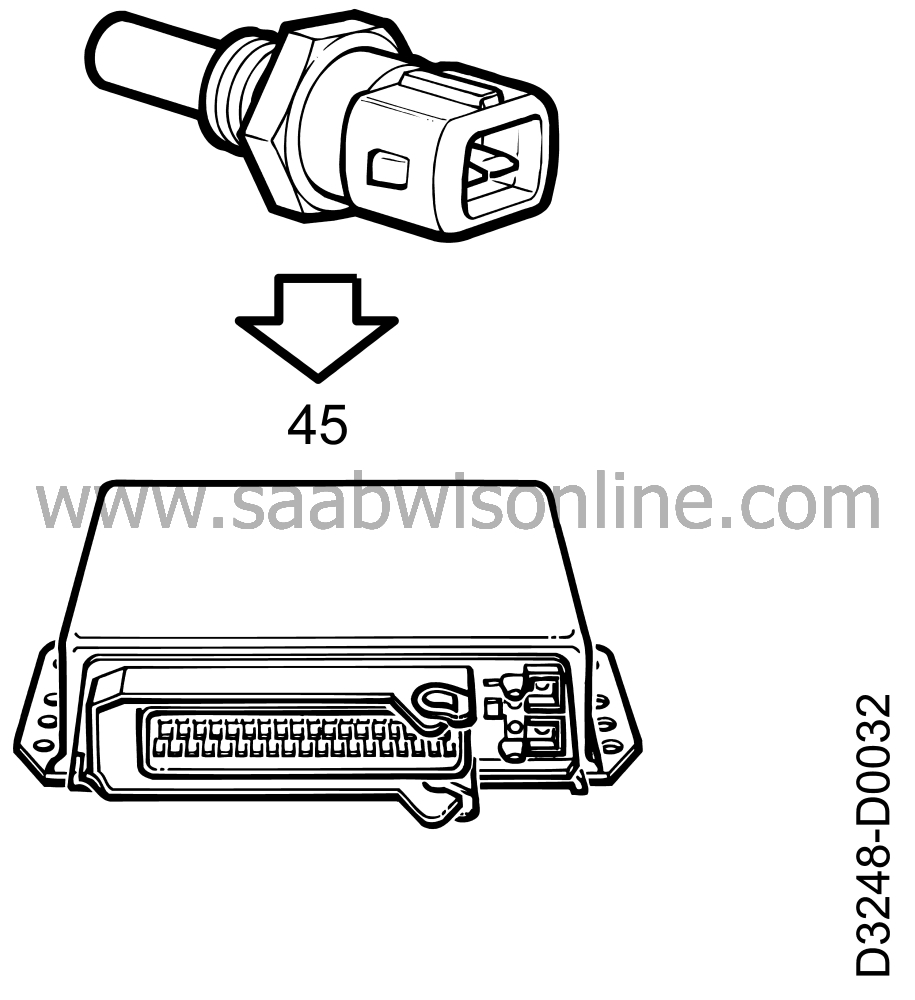Principle of operation, coolanttemperature
| Principle of operation, coolant temperature |

| Coolant temperature sensor |
The MOTRONIC control module receives information on the temperature of the engine (coolant) from the temperature sensor mounted on the intake manifold.
The resistance of the resistor built into the temperature sensor varies with the temperature, so that the voltage level of the signal applied to pin 45 of the control module also varies.
The table below shows how resistance and voltage vary with engine temperature.
|
°C
|
°F
|
Voltage (approx.)
|
Resistance (approx.
kilo-ohms)
|
|
-30
|
-22
|
4.8
|
20-30
|
|
-10
|
14
|
4.5
|
8.3-10.6
|
|
0
|
32
|
4.3
|
5.2-6.4
|
|
20
|
68
|
3.5
|
2.3-2.7
|
|
40
|
104
|
2.7
|
1.0-1.3
|
|
60
|
140
|
1.9
|
0.56-0.67
|
|
80
|
176
|
1.2
|
0.30-0.36
|
|
90
|
194
|
0.9
|
0.20-0.24
|
At low temperatures the sensor applies a high signal voltage to the control module while at high temperatures a low signal voltage is applied.
For more accurate values, refer to Technical data.
The temperature sensor is connected to signal ground together with a number of other sensors via pin 30 of the control module.
In the event of a break in the circuit, the control module selects a fixed signal voltage corresponding to 80°C (176°F).



